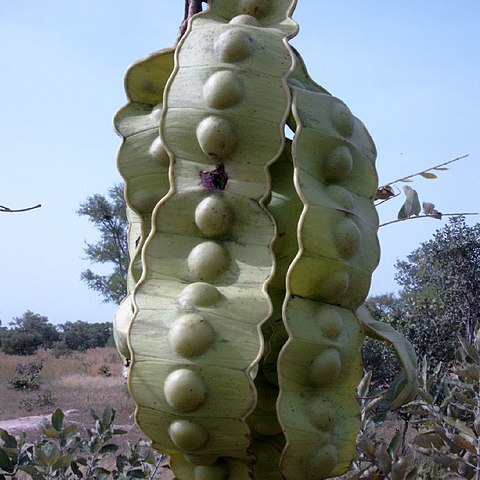A small tree. It grows 8 m tall. It has low branches and a wide crown. It loses its leaves during the year. The bark is grey-brown and has stripes across it. It is scaly. The leaves are alternate and twice divided. The stalk is 25-30 cm long with 2-9 pair of side stalks which have 10-20 pairs of leaflets. The base of the leaflets is unequal. They are 2-3 cm long by 1 cm wide. The flowers are white to yellow and have a slight scent. They are in spikes 15 cm long in the axils of leaves. The fruit is a pod. It is 10-22 cm long and flat. The seeds have 2 wings.
A savannah tree, to 20 ft. high
Flowers creamy-white.


